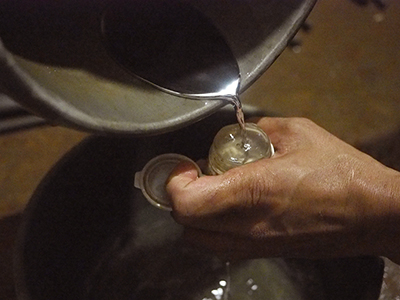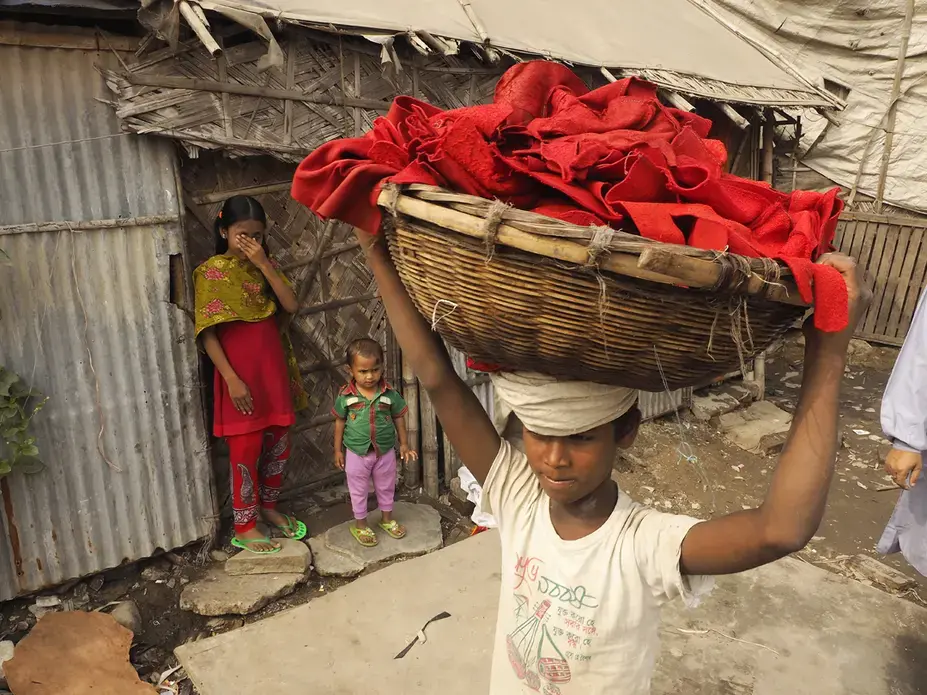Driving through the congested streets of Dhaka, we could smell Hazaribagh before we reached it. The neighborhood in the heart of Dhaka is home to about 150 leather tanneries and footwear factories and is, by many accounts, one of the most intensely polluted places on the planet.
The stench of the place smacked us in the face: rotting animal flesh, garbage, raw sewage, auto exhaust and acrid chemicals mingled together in a nauseating stew. I wondered how people could work in this place without gagging, until, after a few minutes, I realized that I didn't smell anything, any more. It is remarkable how quickly the senses adapt.
And perhaps that is one reason Hazaribagh persists. The senses adapt, what seems horrific becomes normal, and people return day after day to work for a few dollars in conditions that are nothing short of hellish.
The other reason Hazaribagh still exists, in spite of court orders, is the money. Bangladesh exported more than a billion dollars' worth of tanned leather and leather goods in 2014, according to the Asian Foundation. While leather from Bangladesh represents a tiny percentage of the $200 billion-plus global leather market, it is a significant driver of the country's economy, and one that the Bangladesh government is trying to grow.
And here is the conflict. The leather and leather-goods industry is a major––and widely acknowledged––polluter responsible for dumping an estimated 22,000 cubic meters of environmentally hazardous waste a day into the Buriganga River, by the government's own reports. But after more than 15 years of court orders, threatened fines and delayed plans to relocate the tanneries to a site outside Dhaka, Hazaribagh is only now approaching yet another deadline for its ultimate shutdown. The government has given tanners until March 31, 2017, to cease operations and move to an industrial park in Savar, about 14 miles outside of Dhaka.
Open canals run with untreated effluent from the tanneries, garbage, and human and animal waste, which flows into the Buriganga River less than a mile away. Enormous mounds of cast-off leather scraps, destined for glue factories, line the canals. Feral dogs eat the scraps and fight with each other over them.
Inside the tanneries, the work is dangerous, hot and dirty. Only a few of the workers were wearing gloves or boots when we visited. Most worked with their bare hands, standing barefoot in the soup of chemicals that slosh onto the tannery floor. Men crawled in and out of the giant drums where hides are tanned, effectively bathing themselves in chromium sulfate and other chemicals.
Child labor is common in the tanneries of Bangladesh. We saw children and young boys carrying water and hides and operating stretching machines. I watched one young boy feeding sheets of leather between the rollers of a stretching machine and thought about how easily he could lose a hand. At first, I thought another child was playing on the edge of a vat of chemicals and worried that he might fall in. Then I realized that it was his job to stir the hides.
Tanners use different chemicals and acids at various stages to process the leather. Once the hair is removed, they use chromium sulfate with other chemicals to tan the hides. The chromium turns the leather blue—known at this stage of the process as "wet blue"—and stains the skin of the workers. While less toxic than the notoriously dangerous hexavalent chromium from which it is derived, chromium sulfate causes serious skin and respiratory irritation. Some of the workers had blackened, peeling skin on their hands and feet from long exposure to the tanning chemicals. But none of the workers that we spoke with seemed aware of––or concerned about––the hazards of the chemicals they handle daily. Some workers develop persistent dry coughs, thought to be caused from inhalation of sulfuric acid and other toxic fumes
The move to an industrial park at Savar, initiated by an order from the Bangladesh High Court, has been more than 14 years in the making. During all this time, the government has allowed untreated waste water to flow into canals leading into the Buriganga River.
In the last few months, about 40 of the original tanneries in Hazaribagh have moved to Savar, according to local press reports. That leaves about 150 tanneries still to relocate.
Savar has a central effluent treatment center where chemicals and solids are to be removed from wastewater before its discharged—a vast improvement from Hazaribagh. However, as Richard Pearshouse of Human Rights Watch notes, if the government does not closely monitor the water treatment and discharge and worker safety, Bangladesh is "just moving the problem from Hazaribagh to Savar."






































